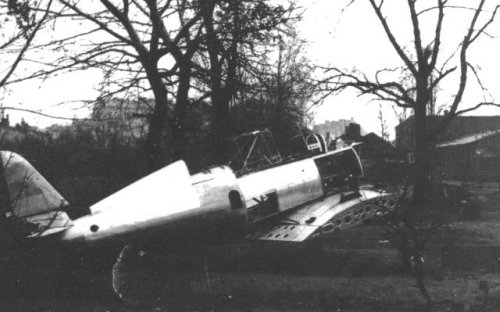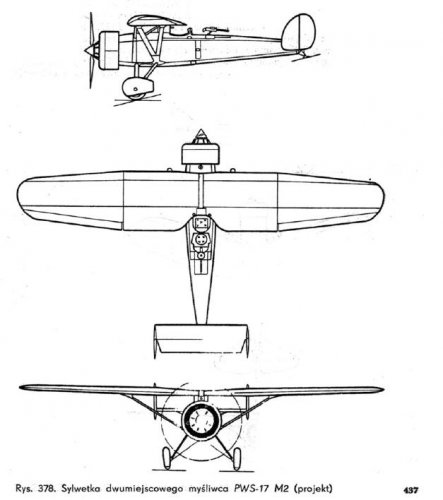P.Z.L. P.50 Jastrzab
Designed at the end of 1936 as a successor to the P.Z.L. P.11, the P.50 was a small monoplane with an elliptical wing and appearance like that of the American Seversky P-35.
The original specification required a highly manoeuvrable interceptor for the close defence of specific targets, propelled by an 840 hp Bristol Mercury VIII air-cooled radial engine and armed with four 7.7 mm machine guns: two WZ.36 G in the nose and two WZ.36 SG in the external wing panels.
The manufacture of 300 aircraft, under the denomination P.50A Jastrzab I, started in 1938. Delivery of the first 50 machines was expected by September 1939. The Aviation Command planned an expansion programme that was to end in 1941, with 15 squadrons equipped with P.50 A to and a reserve of 150 aircraft. The manufacture under licence of the Mercury VIII began in the P.Z.L-W.P.I aero-engine plant at Warsaw-Okeçie.
The prototype P.50/I was completed in September 1938. It was a fully metallic plane, with 2,500 kg gross weight, equipped with one Hamilton/P.Z.L. three-blade variable-pitch airscrew. The wings, spanning 9.7 m, housed the Dowty retractable undercarriage, flaps and Handley-Page automatic slots.
During its first flight in February 1939, it showed instability at low-speed and tail flutter in dive. The prototype was under-powered, with low rate of climb and the top speed was only 430 kph. The test pilots reported that their flight characteristics were inferior to those of the Seversky EP-1.
In August the P.50/I managed to fly at 500 kph thanks to the amendments to the carburettor air intake, tail unit and wing/fuselage fillets. In April the General Zając cancelled the production programme and ordered using the Mercury VIII available in the P.Z.L. P.11g Kobuz emergency fighters.
The basic Jastrzab airframe was adapted for many more powerful engines, like the indigenous 1,200 hp P.Z.L. Waran, lengthening the fuselage up to 8.2 m. Attempts were made to obtain either 1,050 hp Pratt & Whitney Twin Wasp, 1,400 hp Gnôme-Rhône 14N 50, 1,145 hp Bristol Taurus III and 1,375 hp Bristol Hercules radial engines.
The new aircraft, called P.50B, would have been a strike-fighter armed with two 20 mm Wz.38D cannons in the wing roots and two 7.7 mm Wz.36 G machine guns in the nose and would be able to carry one 300 kg bomb or one detachable fuel tank under the fuselage.
The airframe was completed in the spring of 1939, but the Gnôme-Rhône 14N 21 engine acquired in France was not available on time.
The construction of other more advanced versions in 1940-41 had been foreseen:
P.Z.L. P.53A Jastrzab II with Waran or Bristol Hercules engines and P.Z.L./Hamilton-Standard propeller.
P.Z.L. P.53B, with Gnôme-Rhône 14N 51.
P.Z.L. P.56A Kania, with Hispano-Suiza H.S.12Y-31 or Allison V-1710-23 in-line engines.
P.Z.L. P.56B with one 1,600 hp Hispano-Suiza H.S.12Z.
























































